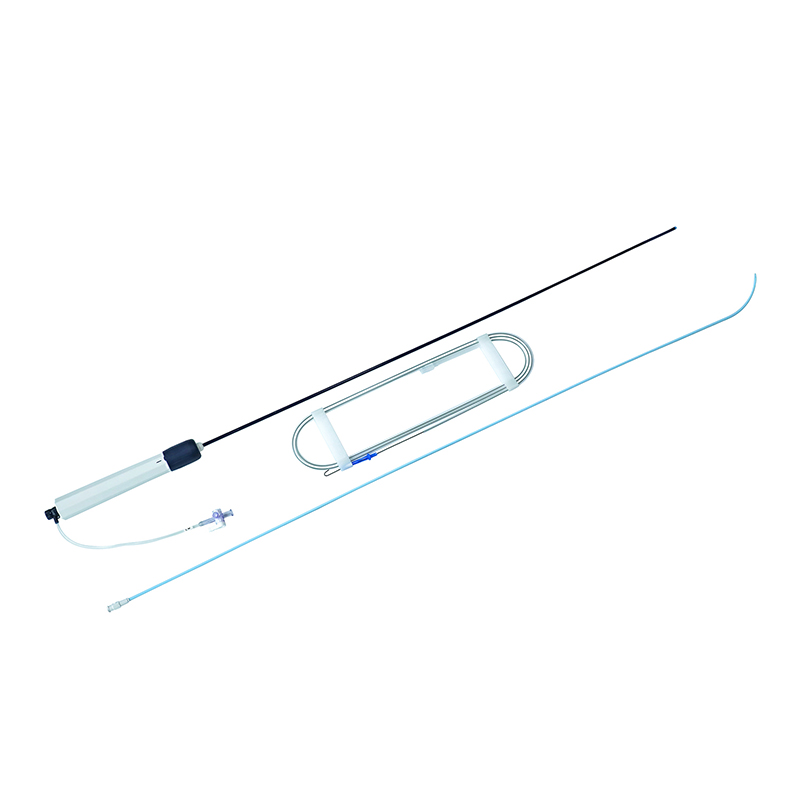In the field of modern medicine, particularly within interventional cardiology, radiology, and vascular surgery, few tools are as indispensable as the introducer sheath. As a foundational medical device, the introducer sheath enables safe and efficient vascular access, allowing clinicians to perform diagnostic and therapeutic procedures with precision and control.
This comprehensive guide will explain what an introducer sheath is, how steerable sheath technology enhances procedural outcomes, and how introducer sheaths differ from other similar medical products like guiding catheters. We will also explore the critical reasons why introducer sheaths are widely used in angiographic procedures.
What Is an Introducer Sheath?
An introducer sheath is a specialized medical device designed to facilitate access to blood vessels during minimally invasive procedures. It is typically inserted into a peripheral artery or vein—most commonly the femoral or radial artery—to create a conduit for the insertion of catheters, wires, balloons, and other tools used in diagnostic and interventional procedures.
The introducer sheath consists of a flexible, hollow tube with a hemostatic valve and a dilator. The dilator helps to insert the sheath into the vessel, and the valve maintains hemostasis, preventing blood loss when devices are inserted or removed.
Key Functions of an Introducer Sheath:
- Provides a stable access point into the vascular system.
- Protects the vessel from trauma caused by repeated insertion of devices.
- Maintains a closed system to reduce the risk of bleeding and infection.
- Allows for quick and efficient device exchange.
Introducer sheaths are available in various sizes, lengths, and materials to accommodate different procedures and patient anatomies.
Steerable Sheath Technology
In complex cardiovascular or neurovascular interventions, traditional straight sheaths may limit access to challenging anatomies. This limitation has led to the development of steerable introducer sheaths—an innovation that significantly enhances procedural flexibility and precision.
A steerable sheath features a deflectable or articulating tip, which can be navigated in multiple directions using a handle or dial on the proximal end. This articulation allows for precise positioning of devices within tortuous or hard-to-reach areas of the vascular system.
Advantages of Steerable Introducer Sheaths:
- Improved navigation through difficult vascular pathways.
- Enhanced procedural control, especially in confined anatomical spaces.
- Minimized trauma to vessel walls by reducing excessive manipulation.
- Optimal support for device delivery systems.
Steerable sheaths are particularly beneficial in structural heart procedures (e.g., left atrial appendage occlusion, mitral valve repair), electrophysiology studies, and neurovascular interventions like aneurysm coiling or thrombectomy.
Guiding Catheter vs. Introducer Sheath: What’s the Difference?
Although guiding catheters and introducer sheaths are both tools used to gain vascular access and deliver interventional devices, they serve different purposes and are constructed differently.
| Feature | Guiding Catheter | Introducer Sheath |
| Primary Use | Guide and support diagnostic or therapeutic devices to the target site | Create and maintain vascular access |
| Design | Long, pre-shaped with torque control | Short, flexible with optional steerability |
| Valve System | Usually lacks a hemostasis valve | Equipped with hemostatic valve to reduce blood loss |
| Placement | Inserted deeper into the vascular system | Positioned at the access entry point (e.g., femoral or radial artery) |
| Support | Offers directional guidance and support for catheter systems | Serves as a portal for device introduction and exchange |
Understanding the distinction is important when selecting the appropriate medical products for a given procedure.
Why Are Introducer Sheaths Used in Angiographic Procedures?
Introducer sheaths are commonly used in angiographic procedures because they streamline the process of injecting contrast dye, obtaining imaging, and deploying interventional tools—all while preserving vascular integrity.
Main Benefits of Introducer Sheaths in Angiography:
- Preserve Vessel Access
Once inserted, the sheath maintains a stable and open access point. This prevents repeated punctures and reduces the risk of complications. - Enable Multiple Device Exchanges
Complex angiographic procedures often require the use of several different catheters and wires. The introducer sheath allows these devices to be changed quickly and safely through a single access point. - Maintain Hemostasis
Thanks to the built-in valve, the sheath prevents blood from escaping even as instruments are passed through it. This minimizes blood loss and maintains patient stability. - Reduce Risk of Complications
By reducing vessel trauma and maintaining a sterile path for devices, introducer sheaths decrease the risk of vessel dissection, thrombosis, or infection. - Improve Procedure Time and Efficiency
With easy access and quick device interchange, introducer sheaths help reduce procedural time—critical in both elective and emergency interventions.
These benefits explain why introducer sheaths are standard tools in procedures such as coronary angiography, peripheral angioplasty, and cerebral embolization.
Conclusion
The introducer sheath is a cornerstone medical device in today’s interventional landscape. Its role in facilitating safe, repeatable vascular access cannot be overstated. As medical procedures become increasingly complex, innovations like the steerable introducer sheath are reshaping how clinicians approach challenging anatomies and streamline workflows.
Understanding the function and benefits of introducer sheaths—along with how they compare to other medical products like guiding catheters—empowers healthcare professionals to make informed decisions that improve patient outcomes and procedural success.
Whether you’re a medical practitioner, healthcare administrator, or product distributor, keeping up with the latest in steerable sheath technology and vascular access tools is essential for maintaining excellence in patient care.
Post time: Jun-03-2025








